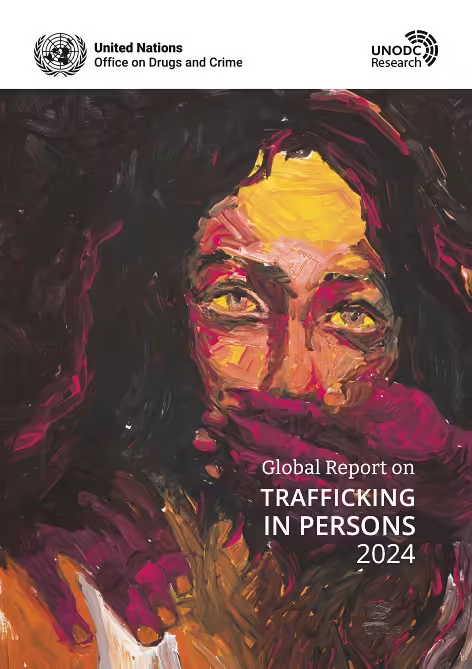A recent report by the United Nations Office on Drugs and Crime (UNODC) revealed a 25% increase in the number of human trafficking victims detected worldwide in 2022, compared to pre-pandemic levels in 2019. The Global Report on Trafficking in Persons 2024 highlights alarming trends, such as rising child trafficking, trafficking for forced labor, and forced criminality, fueled by poverty, conflict, and climate change, which have left more people vulnerable to exploitation.
Rising Trends in Human Trafficking Victims
Between 2019 and 2022, there was a significant surge in the number of human trafficking victims, particularly those trafficked for forced labor, which increased by 47%. South Asian trafficking victims, in particular, were found across 36 countries globally, including regions such as Europe, the Middle East, Sub-Saharan Africa, the Americas, and East Asia. While trafficking numbers in the Middle East decreased, they remained prominent in other regions.
The report revealed that the number of child trafficking victims globally increased by 31% in 2022 compared to 2019, with girls particularly being targeted for sexual exploitation. Forced criminality, including online scams, emerged as a disturbing form of trafficking, with its share of detected victims growing from 1% in 2016 to 8% in 2022.
Child Trafficking and Gender Disparities
Human trafficking continues to disproportionately affect women and children, who account for the majority of victims. In 2022, women and girls made up 61% of detected victims worldwide. Of these, 60% were trafficked for sexual exploitation, while 45% of boys were trafficked for forced labor. In many cases, boys were also exploited for forced criminality and begging. The trafficking of children for sexual exploitation has particularly risen in high-income countries, where girls are often the primary victims.
The African Continent’s Role in Human Trafficking
The report also emphasized that African victims make up a significant portion of global human trafficking flows, with 31% of detected cross-border trafficking involving African citizens. The majority of African victims are trafficked within the continent, with displacement, insecurity, and climate change exacerbating the risks. Children were the primary victims of forced labor, sexual exploitation, and forced begging in many African nations.
Sexual Exploitation and Forced Criminality on the Rise
The resurgence of sexual exploitation is a key concern, with the number of victims detected in sexual exploitation increasing by 41% in 2022 compared to 2020, surpassing 2019 levels. This form of trafficking continues to predominantly target women and girls, with over 90% of victims in this category being female.
Efforts to Combat Human Trafficking
The UNODC’s 2024 report provides coverage of 156 countries, offering a comprehensive global overview of human trafficking trends. However, despite the rise in victim detection, human trafficking remains a persistent and growing problem, with the report calling for more robust international efforts to combat this issue and protect vulnerable individuals from exploitation.




